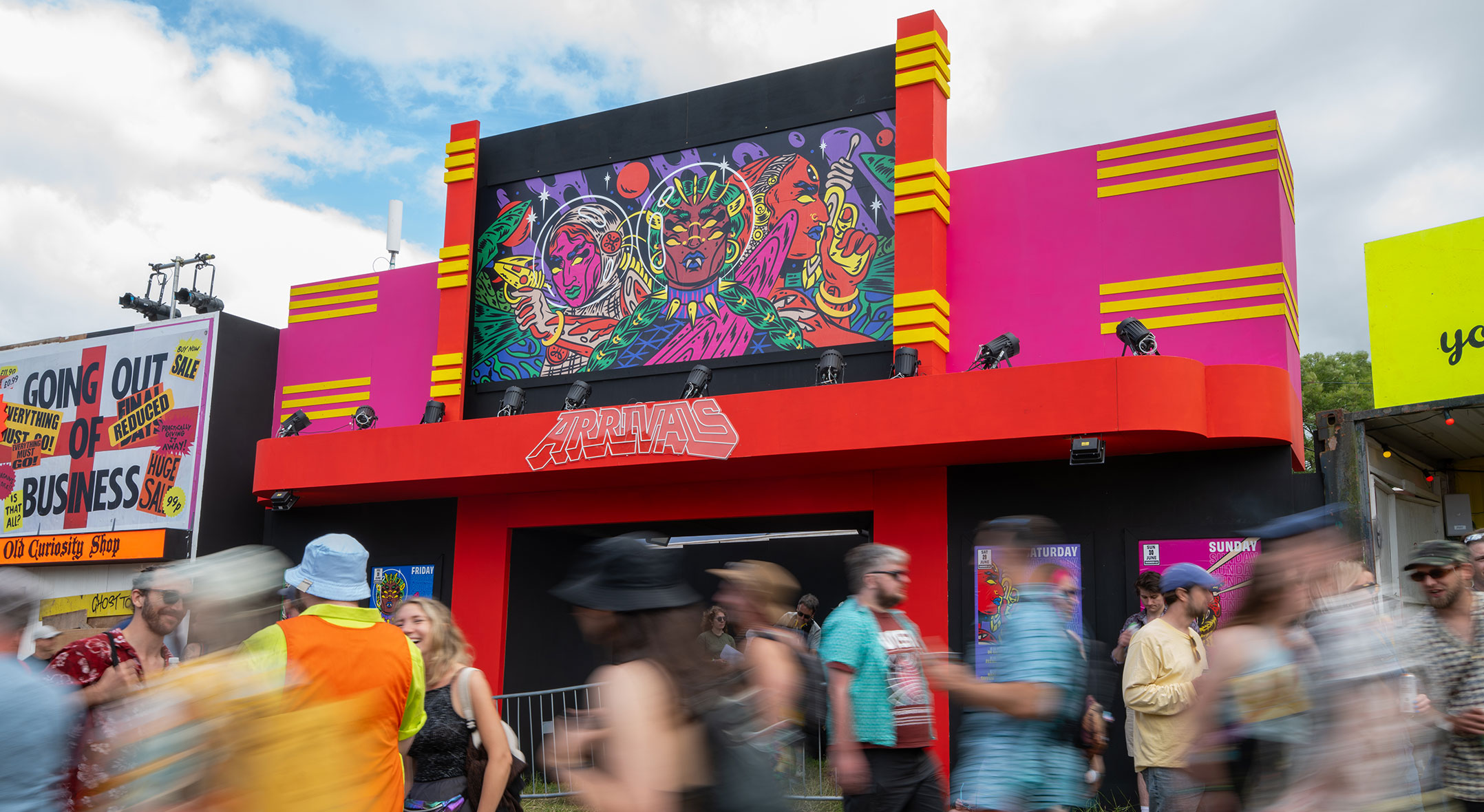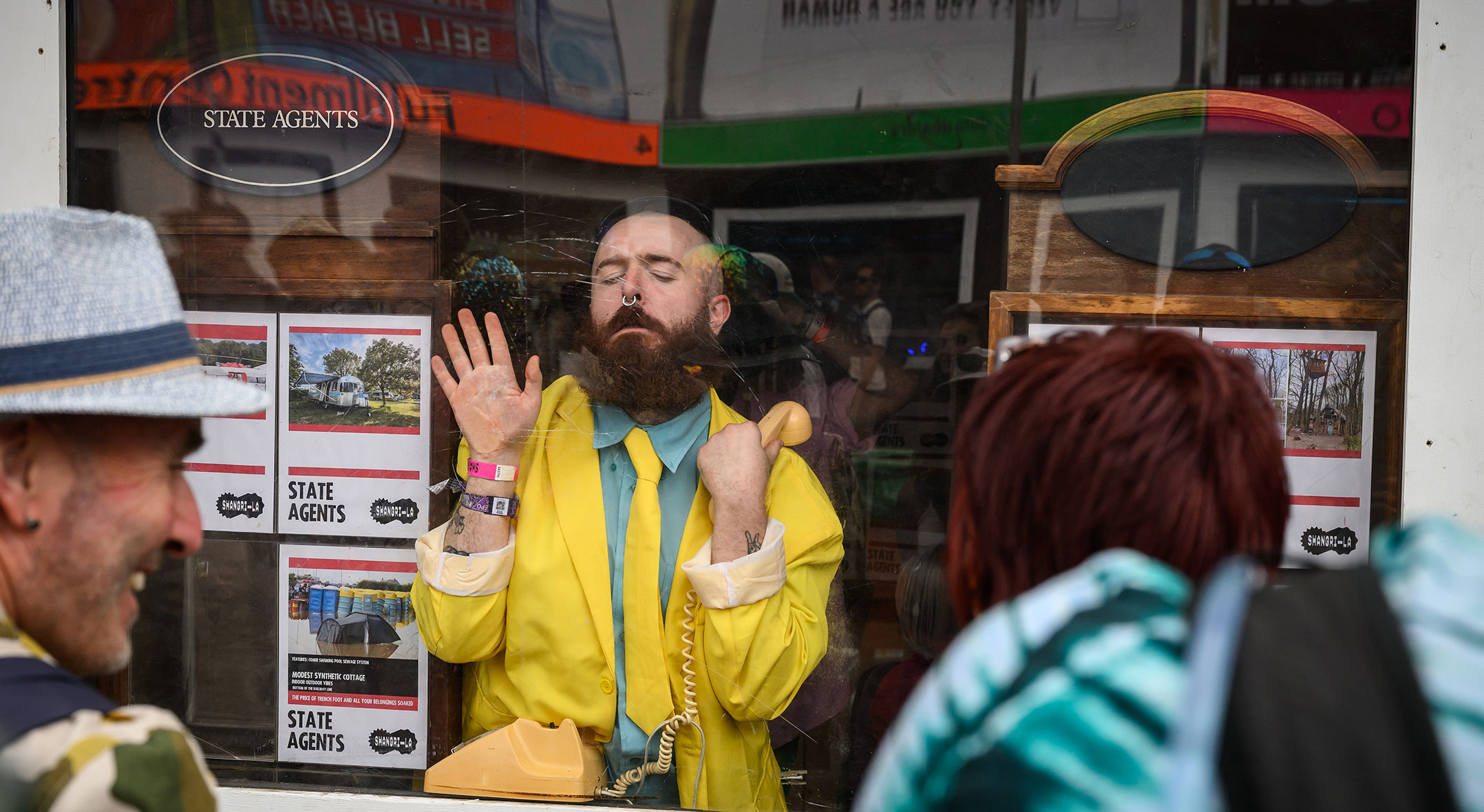
If you venture to the south-east corner of Glastonbury’s sprawling Worthy Farm site, you’ll find Shangri-La, a patch of field filled with tiny club venues, outdoor stages and political art. Each year, the area adopts a different theme but, for 2024, the concept picks up where last year left off with ‘Everything Must Go – The Sequel’, an immersive commentary on consumerism and capitalism.
As you walk through the area's central 'parade', structures made to look like shop fronts line the path. On one side, you’ll see people doing their make-up for phone cameras through the window of the InfluenceZoo and a boss berating their employee in the Fulfilment Centre. On the other, there’s Capitalism To Gogo, complete with staff pushing products on from bending the glass, and State Agents, a satirical take on a realtor’s office.
‘It’s a version of an alternative high street experience,’ says Kaye Dunnings, Shangri-La’s creative director. ‘Our high streets and communities are in decline and, looking at those things, late-stage capitalism is mostly the problem. It’s looking at solutions, but also trying to find ways to deal with the trauma through comedy.’
The shopping parade culminates in the new, alfresco Peace Stage, which will be present at the festival for this year only. The space is designed as a decaying shopping centre, the lettering on its signage crooked and unkempt. The space will change over the weekend as activists and artists – and general festival-goers – paste up art they’ve created on site, sharing their positive messages with those who enter the area. ‘We’re looking at consumerism, but twisting and turning it into something that makes us feel really good, positive and powerful,’ Dunnings explains of the ‘living, breathing piece of art’.

Shangri-La in 2024 is also opening its doors to communities that are often less commonly represented in mainstream culture. In the Nomad space, you can become a member of the Chapel Of Unrest, a protest group based in Bristol’s Rockaway Park, aiming to spread hope to their community and beyond. In a blue bus next door, you can join one of their number, Joe, for a cup of tea in the vehicle he calls home.
Next door, under a bright red sign, is Arrivals: a new live space and a Glastonbury first. Run by the team behind Dialled In, the events team and platform showcasing South Asian creativity, it will play host to artists and DJs from the diaspora all weekend. Inside, it transports punters to an alien jungle planet, its walls adorned with illustrations that connect imagery from the South Asian world with pulp sci-fi visuals.
‘Everything has a meaning and speaks to the past, present and future,’ Dhruva Balram of Dialled In says. ‘The space has been designed, conceptualised and programmed by an entirely South Asian team.’ It marks the first time that region has been represented so strongly at Glastonbury – proof that, even this far into its story, the festival continues to evolve and expand its reach, ever wider.







